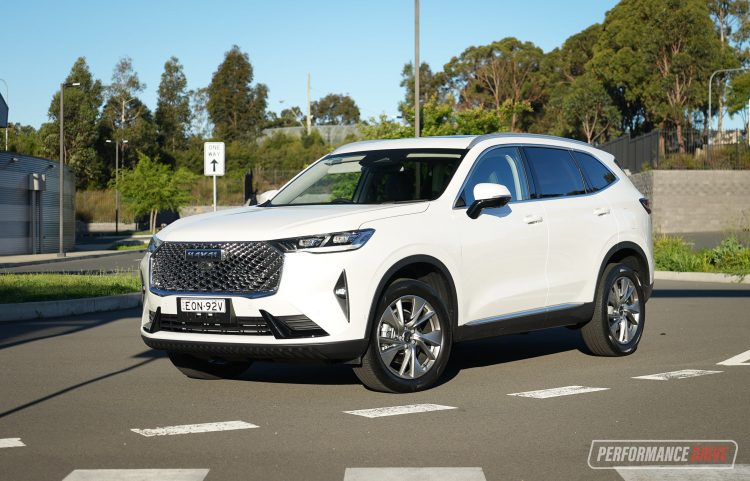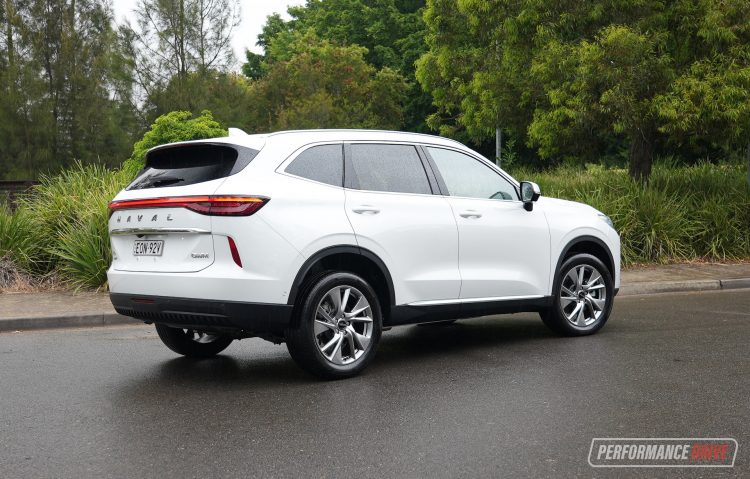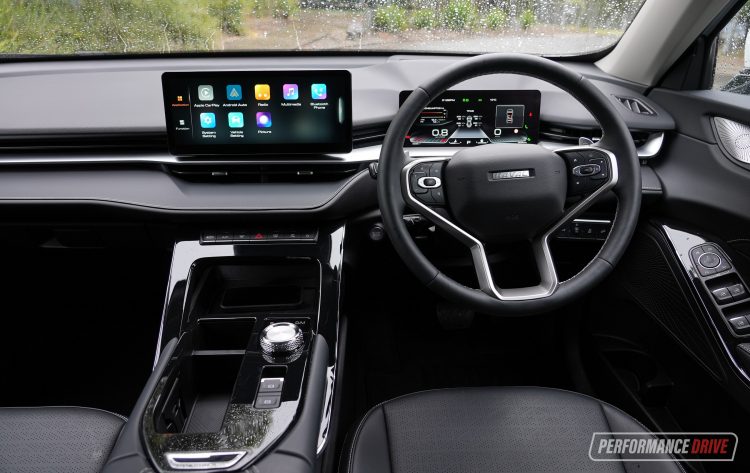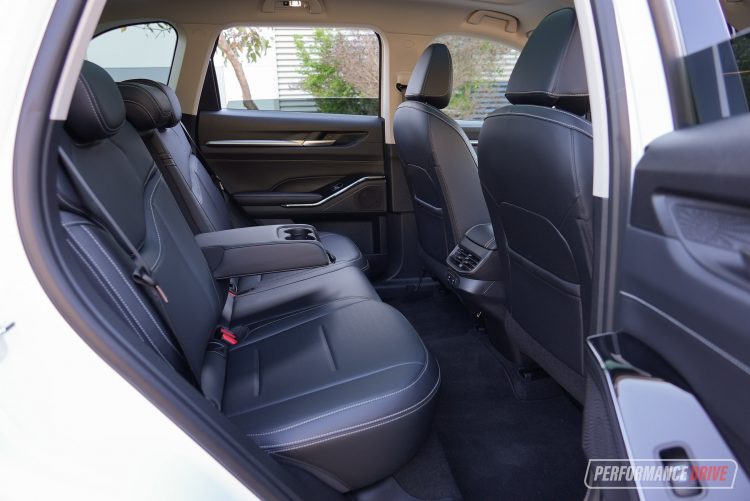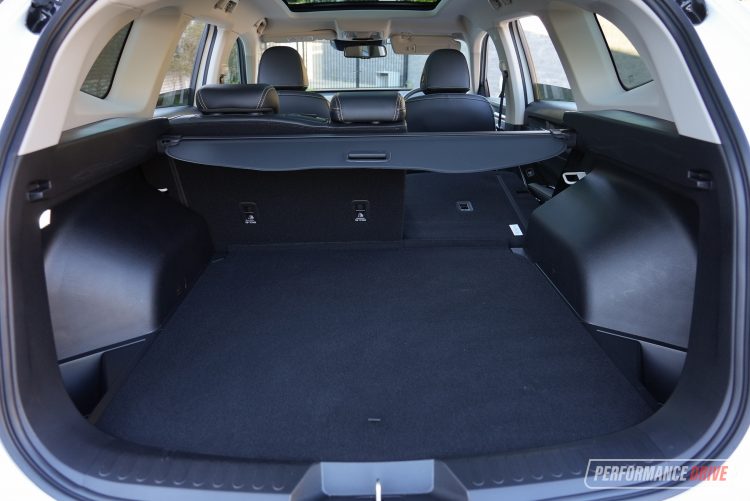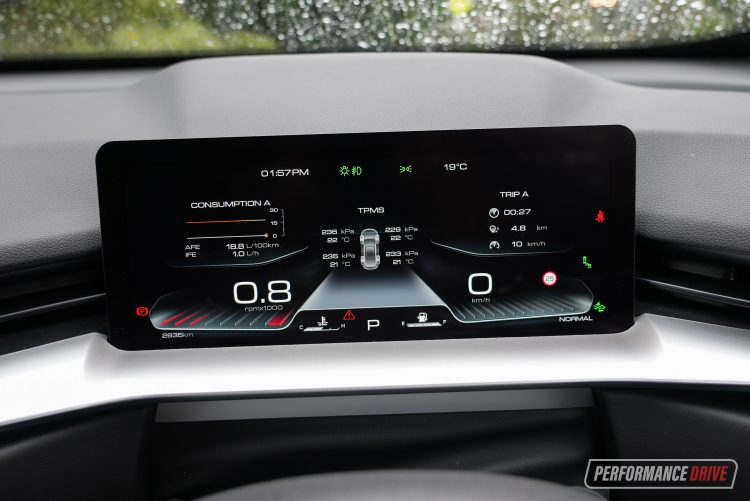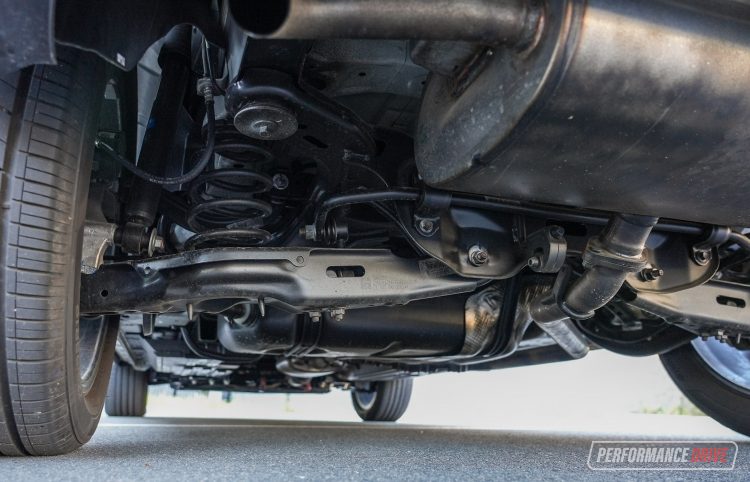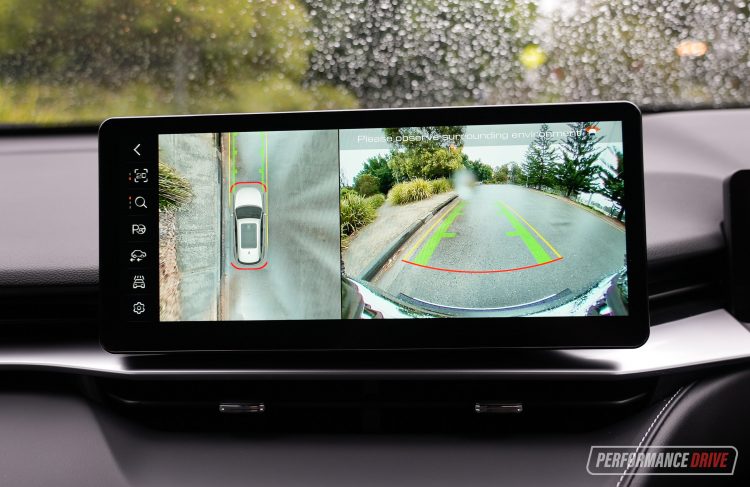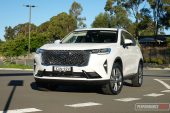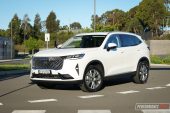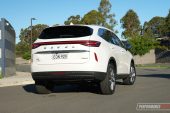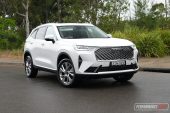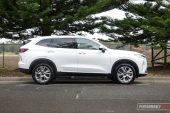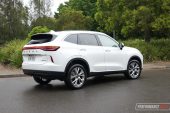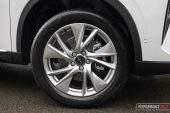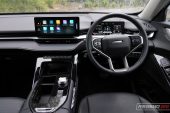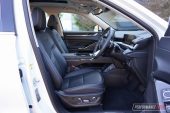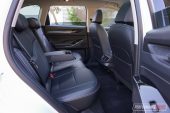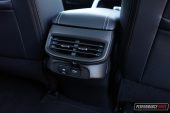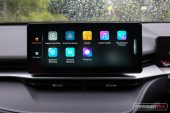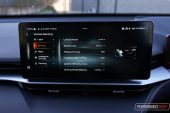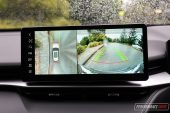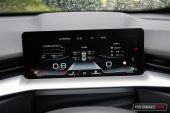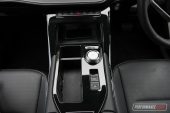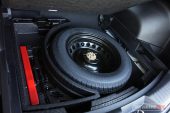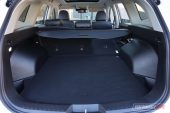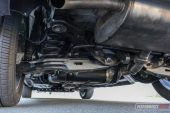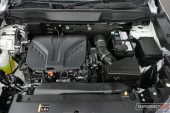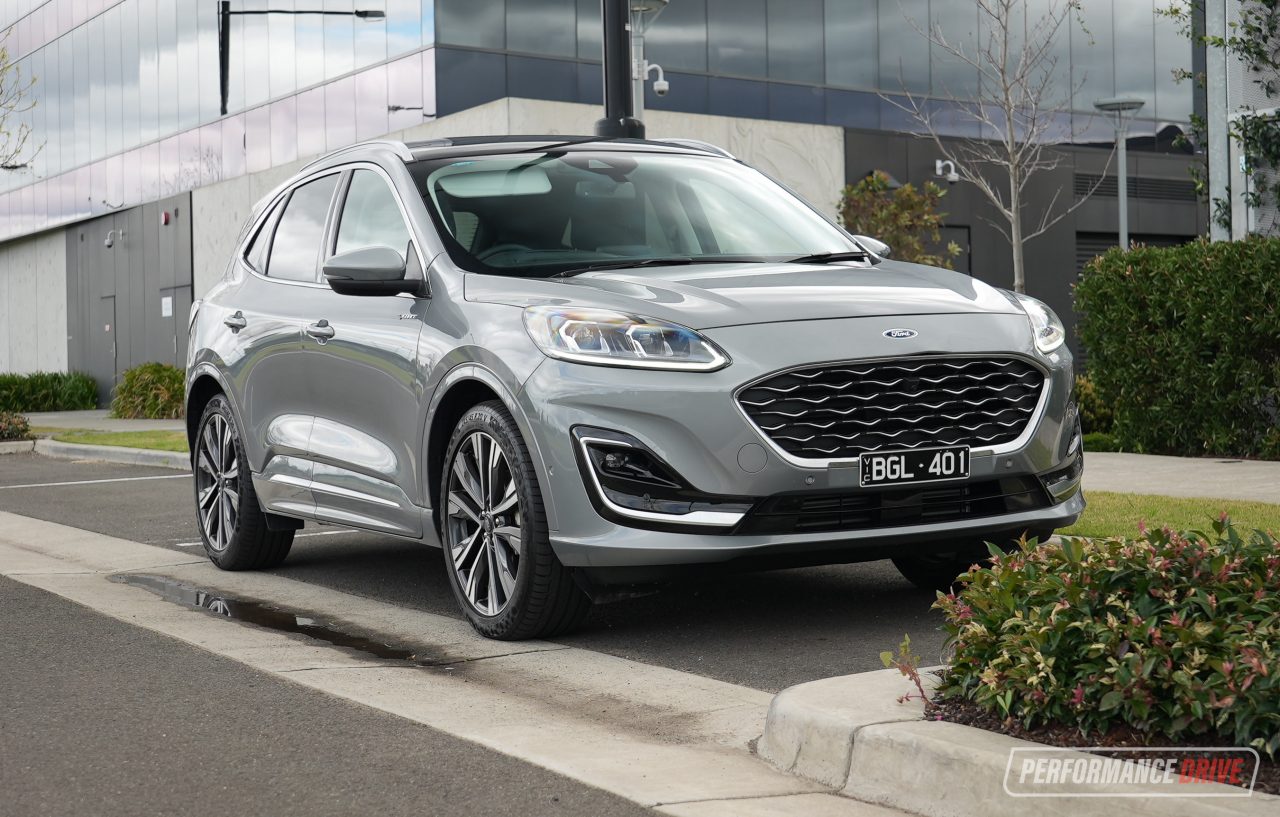Welcome to the 2021 Haval H6. This is the second new-generation model from the Chinese carmaker, promising great packaging, space, and of course excellent value against its mid-size SUV peers.
Here we’re sampling the flagship Ultra variant, which is one of three options available out of the Premium, Lux, and Ultra. All are front-wheel drive except the Ultra is available in all-wheel drive as well as front-drive.
Prices start at just $31,990 for the base model, then $34,990 for the mid-level Lux, and $37,990 for the FWD Ultra (as tested), plus $2000 for AWD. Given the H6 goes up against some very tough competition, such as the ever-popular Toyota RAV4 and Mazda CX-5, the low prices here definitely help it be noticed. And these prices are drive-away, unlike most rivals.
2021 Haval H6 Ultra – THE SPECS
[column width=”47%” padding=”6%”]Engine: 2.0-litre turbo four-cylinder
Output: 150kW@6300rpm / 320Nm@1500-4000rpm
Transmission: Seven-speed dual-clutch auto
Drive type: Front-wheel drive
Wheels: F & R: 19×7.0, 225/55
ANCAP: Not tested
Tare weight: 1555kg
Power-to-weight: 10.36:1 (kg:kW)
Official fuel economy: 7.4L/100km
Economy during test: 9.2L/100km
Fuel capacity/Type: 61L/91 RON[/column] [column width=”47%” padding=”0″]Power efficiency: 20.27kW:L/100km
0-60km/h: 3.76 seconds*
0-100km/h: 7.62 seconds*
60-110km/h: 5.18 seconds*
1/4 mile: 15.69 seconds at 148.3km/h*
Max acceleration: 0.714g
100-0km/h braking: 3.36 seconds at 43.59 metres*
Max deceleration: -1.096g
Decibel at idle: 43*
Peak decibel at 60-100km/h: 85*
Priced from: $37,990[/column][end_columns]
* Figures as tested by PerformanceDrive on the day. Factory claims may be different
2021 Haval H6 Ultra – THE PACKAGE
It certainly looks premium, with its classy chrome detailing and big front grille. It’s also quite well proportioned in our opinion, with no awkward shapes or unusual themes that we’ve come to expect from Chinese vehicles. This looks nice. It even shows off a fashionable full-width taillight.
As standard the Ultra comes with neat 19-inch alloy wheels, that big chrome grille at the front, auto LED headlights and taillights, keyless entry, a power taillight, power-folding side mirrors with heating, roof rails, and tinted rearward windows.
The interior is very well laid out and looks modern and premium. There’s plenty of space to move about, with lots of storage options around, including a giant shelf under the centre console. Everyone is covered for charging ports, and there’s a big touch-screen atop the dash.
We like the graphics of the touch-screen, and you can connect your phone via Android Auto or Apple CarPlay. Most of the menu sequences are very logical, too, but loading times are not at the segment benchmark when using the phone mirroring tech. The Ultra comes with an eight-speaker stereo, a surround-view camera system, dual-zone climate control, but strangely no digital radio or in-built sat-nav is available.
Front seat comfort is good, although, as usual, there is a lack of steering column adjustment. Finding a perfect driving position does take time. Rear seat space is very good for this class. With an almost flat floor, even the middle seat position is not bad. There’s also climate vents, charging ports, and a flip-down arm rest with cup holders to support a comfortable journey.
Likewise, boot space is outstanding for this segment. With 600 litres on offer in the default setting, this blows most of the competition out of the water. A 12-volt socket and side pockets add convenience, and underneath the floor is a space-saver spare wheel.
2021 Haval H6 Ultra – THE DRIVE
Power comes from a 2.0-litre turbo-petrol four-cylinder. It is pretty potent for this class, producing 150kW and 320Nm, but average for a 2.0-litre turbo. Torque is also down compared with the industry average for this size turbo engine. Nonetheless, performance is impressive, especially through the mid-range. We timed 0-100km/h in a best of 7.62 seconds, which is among the quickest in the non-performance class.
On the road in normal situations the dual-clutch gearbox and throttle sensitivity result in an elastic take off. It’s quite easy to cause accidental wheelspin due to what feels like a poor powertrain calibration. There’s a lot of stretch-and-twang going on. Being a dual-clutch transmission also means gear shifts are quick but the manufacturer has clearly tried to make the shifts smooth as well, which is probably what results in this laggy delivery. The solution? Haval probably should have just used a conventional torque-convertor auto, especially for this style of vehicle.
As mentioned, you can option for all-wheel drive with the Ultra but here we have the front-drive setup. And it’s great to see it retains a multi-link rear suspension setup. Going with front-wheel drive sees the official fuel consumption drop from 8.3L, to 7.4L/100km, and it’s 70kg lighter. Does any of that matter?
Well, if you are planning trips to the snow or regularly drive on dirt roads or have a difficult steep driveway, then AWD is going to be better for you. But for the rest of us that just want the raised ride height and wagon-like practicality, the FWD option will suffice. You could take it off road to some degree, thanks to 170mm of ground clearance, so that is a small bonus over a conventional wagon. The seat height is obviously more convenient, too. During our test the trip computer showed an average consumption of 9.2L/100km. We’d expect it to be higher in the AWD version.
In terms of handling, the ride quality is definitely more towards the comfort side. It soaks up bumps gradually and doesn’t really care about the aftershock. If you spend most of your time in the suburbs or in the city then this will be fine. Perfect, in fact. But out on country roads, at higher speeds, the lack of body control provokes a sense of nervousness and sloppiness. It doesn’t like changing directions with vigour, either, as body roll and unrefined steering create a fairly unpleasant experience. That’s compared with other like-minded SUVs in this class anyway.
Braking performance is not that great compared with most rivals that we’ve tested either. We can’t be sure it’s down to the 225/55 Hankook tyres, but requiring 43 metres to stop from 100km/h is not very good according to our extensive testing results database. Having a quick scan of our previous results, we can see most SUVs in this class require 40 metres or less. Keep in mind our tests are conducted on the same piece of tarmac, with the same driver and same Racelogic Vbox Sport GPS data-logger.
2021 Haval H6 Ultra – THE VIDEO
2021 Haval H6 Ultra – THE VERDICT
If you’re in the market for a mid-size SUV, we’d recommend you check out the established rivals before signing up for one of these. While it is a good crack at this demanding class, powertrain and handling refinement need more work in our opinion, and braking performance is poor according to our tests. The fact there is no ANCAP rating also instils a level of hesitancy in us.
On the other hand if you all want is a large (larger than many rivals, in fact) and practical SUV that’s excellent value for money, then the Haval H6 is worth a look. Value is clearly its strongest attraction – aside from its rather nice physical design as well – and it’s all backed by a seven-year warranty.
[column width=”47%” padding=”6%”]PROS:
– Great value
– Practical and large cabin for its class, and big boot
– Decent quality inside
– 7-year warranty
– Crisp touch-screen graphics
[/column] [column width=”47%” padding=”0″]CONS:
– Unrefined power delivery
– Sloppy handling compared with rivals
– Poor braking performance
– No sat-nav or digital radio
– No ANCAP rating[/column][end_columns]
As always, if you’re thinking about buying a new car don’t forget to click here to speak with our car buying specialists.
